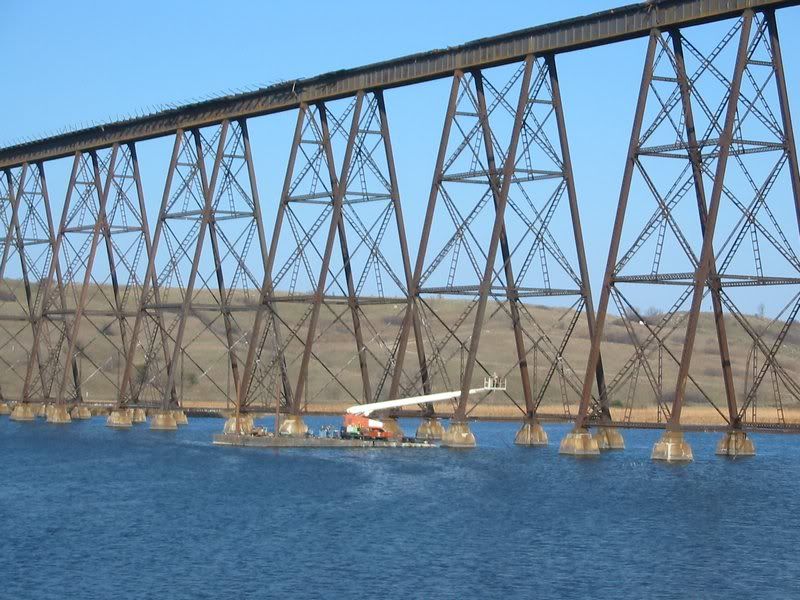PILOON
Super Star Member
I once had a contract to reshingle a roof on an island chalet.
The roof was for a 20 x 30 chalet and materials consisted of shingles, felt underlay and misc materials as well as compressor and misc tools.
The client figured that I would row everything in his tippy boat but was surprised when I showed up with 2 dock floatation styrofoam blocks and maybe 10-12 2 X 8 planks.
Those blocks were 8ft X 24" X10" and when laid flat on the water with everything loaded they barely sank 2" and made for a most stable floatation platform.
We could walk from corner to opposite corner of the 'float' and barely cause it to sink more than a couple of inches. Very stable!
I bet that if you used, say 12 or so of those foam blocks with some suitable planking to deck it together you could float a typical CUT with very good stability.
(this would give you a SOLID floatation platform of 8 ft X 24 ft)
My technique would be to lay down planks and drive 4-5" nails into the foam just to prevent the foam slabs from slipping out. Load will then create pressure to keep the planks in place. Trick will to have close spacing between planking to prevent the foam from breaking between planks.
While a fair amount of HD planks will be needed, ALL planks will be reusable for other projects!
A flat bottom barge or raft will be much much more stable than any pontoon or barrel floatation device.
Over the years I have made many dozens of docks of all kinds, from barrel floated docks to the now standard foam type, and believe you me the foam block technique far surpasses any other form for stability and floatation.
I have seen maybe 25 adults standing on a 12 x 16 dock (raft) with 4-5 foam blocks and nobody even gets their feet wet.
Because of even surface distribution, not much structure is really required either.
The roof was for a 20 x 30 chalet and materials consisted of shingles, felt underlay and misc materials as well as compressor and misc tools.
The client figured that I would row everything in his tippy boat but was surprised when I showed up with 2 dock floatation styrofoam blocks and maybe 10-12 2 X 8 planks.
Those blocks were 8ft X 24" X10" and when laid flat on the water with everything loaded they barely sank 2" and made for a most stable floatation platform.
We could walk from corner to opposite corner of the 'float' and barely cause it to sink more than a couple of inches. Very stable!
I bet that if you used, say 12 or so of those foam blocks with some suitable planking to deck it together you could float a typical CUT with very good stability.
(this would give you a SOLID floatation platform of 8 ft X 24 ft)
My technique would be to lay down planks and drive 4-5" nails into the foam just to prevent the foam slabs from slipping out. Load will then create pressure to keep the planks in place. Trick will to have close spacing between planking to prevent the foam from breaking between planks.
While a fair amount of HD planks will be needed, ALL planks will be reusable for other projects!
A flat bottom barge or raft will be much much more stable than any pontoon or barrel floatation device.
Over the years I have made many dozens of docks of all kinds, from barrel floated docks to the now standard foam type, and believe you me the foam block technique far surpasses any other form for stability and floatation.
I have seen maybe 25 adults standing on a 12 x 16 dock (raft) with 4-5 foam blocks and nobody even gets their feet wet.
Because of even surface distribution, not much structure is really required either.

